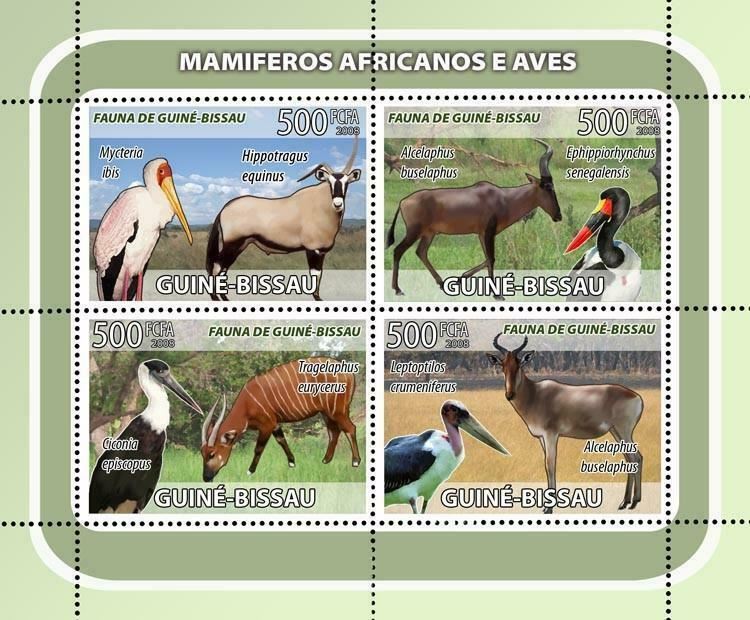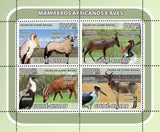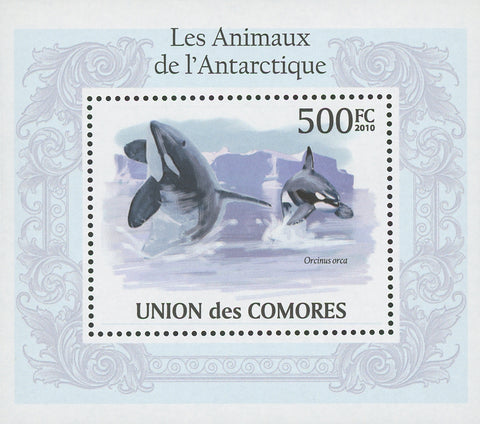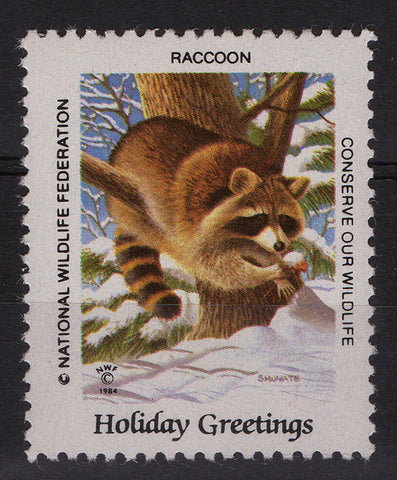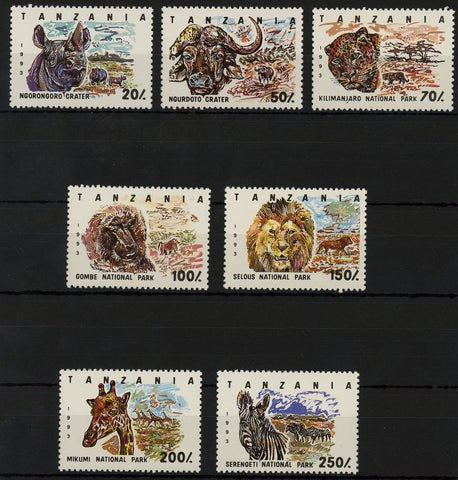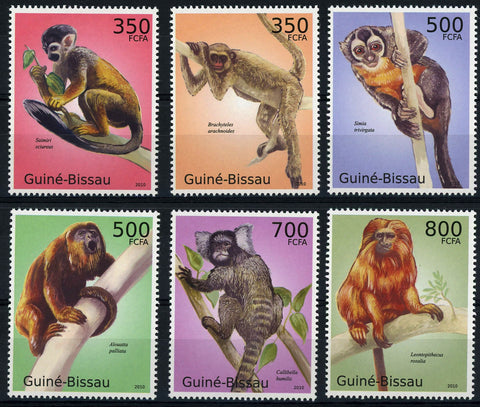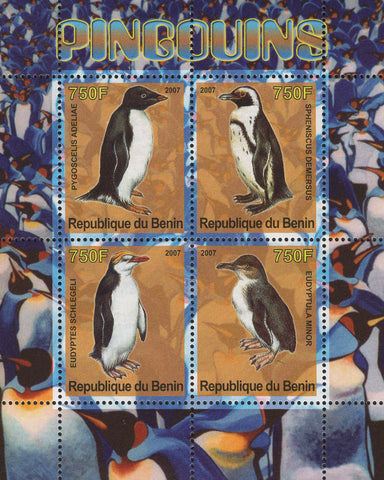Antelopes Stamp Hartebeest Bird Alcelaphus Buselaphus S/S MNH #3812-3815
Add to wishlist
Antelopes Stamp Hartebeest Bird Alcelaphus Buselaphus S/S MNH #3812-3815
$16.68
- Product Sku:
- Categories Wild Animals
Antelopes Stamp Hartebeest Bird Alcelaphus Buselaphus S/S MNH #3812-3815
The term antelope is used to refer to many species of even-toed ruminant which are indigenous to various regions in Africa and Eurasia. Antelope comprise a wastebasket taxon within the family Bovidae, encompassing all Old World ruminants that are not bovines, sheep, goats, deer, or giraffes.
Fast & Free Shipping within U.S.A.
We Care for your order, Pack it carefully and ship it within 24 hours.
Satisfaction Guaranteed!
Please explore our store for more stamps, souvenir sheets, post-office collectibles and philately books and pre-philatelic items:
montecinos.philately
Related Products
{"id":1735836860473,"title":"Antarctic Animals Orcinus Orca Mini Sov. Sheet MNH","handle":"comoros-antarctic-animals-orcinus-orca-mini-sov-sheet-mnh","description":"\u003cp\u003eAntarctic Animals Orcinus Orca Mini Sov. Sheet MNH\u003c\/p\u003e\n\u003cp\u003eThe most abundant and best known animals from the southern continent. Penguins, whales seals, albatrosses, other seabirds and a range of invertebrates you may have not heard of such as krill which form the basis of the Antarctic food web. These are the charismatic mega fauna that you have seen pictures and video of, though you may be surprised to find that they live far more interesting and complex lives than you imagine.\u003cbr\u003e\u003cbr\u003eMost of the animals of the south polar region are seasonal visitors, conditions are just too hard for most animals to live there in the winter.\u003c\/p\u003e\n\u003cp\u003e\u003cspan\u003eFast \u0026amp; Free Shipping within U.S.A. \u003c\/span\u003e\u003cbr\u003e\u003cbr\u003e\u003cspan\u003eWe Care for your order, Pack it carefully and ship it within 48 hours. \u003c\/span\u003e\u003cbr\u003e\u003cbr\u003e\u003cspan\u003eSatisfaction Guaranteed! \u003c\/span\u003e\u003cbr\u003e\u003cbr\u003e\u003cspan\u003ePlease explore our store for more stamps, souvenir sheets, post-office collectibles and philately books and pre-philatelic items: \u003c\/span\u003e\u003cbr\u003e\u003cspan\u003emontecinos.philately\u003c\/span\u003e\u003c\/p\u003e","published_at":"2018-09-29T23:47:02-04:00","created_at":"2018-10-09T00:20:46-04:00","vendor":"Montecinos Philately","type":"Souvenir Sheet","tags":["Category_Souvenir Sheet","Comoros","Condition_MNH"],"price":1622,"price_min":1622,"price_max":1622,"available":true,"price_varies":false,"compare_at_price":null,"compare_at_price_min":0,"compare_at_price_max":0,"compare_at_price_varies":false,"variants":[{"id":17142217572409,"title":"Default Title","option1":"Default Title","option2":null,"option3":null,"sku":"A13-371","requires_shipping":true,"taxable":true,"featured_image":null,"available":true,"name":"Antarctic Animals Orcinus Orca Mini Sov. Sheet MNH","public_title":null,"options":["Default Title"],"price":1622,"weight":113,"compare_at_price":null,"inventory_management":"shopify","barcode":null,"requires_selling_plan":false,"selling_plan_allocations":[]}],"images":["\/\/meditative-philately.com\/cdn\/shop\/products\/A13-371.jpg?v=1539058859"],"featured_image":"\/\/meditative-philately.com\/cdn\/shop\/products\/A13-371.jpg?v=1539058859","options":["Title"],"media":[{"alt":null,"id":2336480428089,"position":1,"preview_image":{"aspect_ratio":1.133,"height":827,"width":937,"src":"\/\/meditative-philately.com\/cdn\/shop\/products\/A13-371.jpg?v=1539058859"},"aspect_ratio":1.133,"height":827,"media_type":"image","src":"\/\/meditative-philately.com\/cdn\/shop\/products\/A13-371.jpg?v=1539058859","width":937}],"requires_selling_plan":false,"selling_plan_groups":[],"content":"\u003cp\u003eAntarctic Animals Orcinus Orca Mini Sov. Sheet MNH\u003c\/p\u003e\n\u003cp\u003eThe most abundant and best known animals from the southern continent. Penguins, whales seals, albatrosses, other seabirds and a range of invertebrates you may have not heard of such as krill which form the basis of the Antarctic food web. These are the charismatic mega fauna that you have seen pictures and video of, though you may be surprised to find that they live far more interesting and complex lives than you imagine.\u003cbr\u003e\u003cbr\u003eMost of the animals of the south polar region are seasonal visitors, conditions are just too hard for most animals to live there in the winter.\u003c\/p\u003e\n\u003cp\u003e\u003cspan\u003eFast \u0026amp; Free Shipping within U.S.A. \u003c\/span\u003e\u003cbr\u003e\u003cbr\u003e\u003cspan\u003eWe Care for your order, Pack it carefully and ship it within 48 hours. \u003c\/span\u003e\u003cbr\u003e\u003cbr\u003e\u003cspan\u003eSatisfaction Guaranteed! \u003c\/span\u003e\u003cbr\u003e\u003cbr\u003e\u003cspan\u003ePlease explore our store for more stamps, souvenir sheets, post-office collectibles and philately books and pre-philatelic items: \u003c\/span\u003e\u003cbr\u003e\u003cspan\u003emontecinos.philately\u003c\/span\u003e\u003c\/p\u003e"}
You may also like:
Antarctic Animals Orcinus Orca Mini Sov. Sheet MNH
Antarctic Animals Orcinus Orca Mini Sov. Sheet MNH The most abundant and best known animals...
$16.22
{"id":879024046137,"title":"National Wildlife Federation Cinderellas 1984 Holidays Issue Racoon MNH","handle":"national-wildlife-federation-cinderellas-1984-holidays-issue-racoon-mnh","description":"\u003ch5\u003e\u003cspan\u003eDescription\u003c\/span\u003e\u003c\/h5\u003e\n\u003cp\u003eNational Wildlife Federation Cinderellas 1984, Holidays Issue, \u003cbr\u003eRaccoon\u003cbr\u003eMNH\u003c\/p\u003e","published_at":"2018-05-21T21:02:24-04:00","created_at":"2018-05-21T21:02:25-04:00","vendor":"Montecinos Philately","type":"Stamps:Specialty Philately:Cinderellas","tags":["Condition_MNH"],"price":1102,"price_min":1102,"price_max":1102,"available":true,"price_varies":false,"compare_at_price":null,"compare_at_price_min":0,"compare_at_price_max":0,"compare_at_price_varies":false,"variants":[{"id":8706691072057,"title":"Default Title","option1":"Default Title","option2":null,"option3":null,"sku":"EO-83","requires_shipping":true,"taxable":true,"featured_image":null,"available":true,"name":"National Wildlife Federation Cinderellas 1984 Holidays Issue Racoon MNH","public_title":null,"options":["Default Title"],"price":1102,"weight":1814,"compare_at_price":null,"inventory_management":"shopify","barcode":null,"requires_selling_plan":false,"selling_plan_allocations":[]}],"images":["\/\/meditative-philately.com\/cdn\/shop\/products\/57_e6afc9f2-a677-4c79-a208-eee8de2c7585.jpg?v=1549443891"],"featured_image":"\/\/meditative-philately.com\/cdn\/shop\/products\/57_e6afc9f2-a677-4c79-a208-eee8de2c7585.jpg?v=1549443891","options":["Title"],"media":[{"alt":null,"id":1114505805881,"position":1,"preview_image":{"aspect_ratio":0.828,"height":924,"width":765,"src":"\/\/meditative-philately.com\/cdn\/shop\/products\/57_e6afc9f2-a677-4c79-a208-eee8de2c7585.jpg?v=1549443891"},"aspect_ratio":0.828,"height":924,"media_type":"image","src":"\/\/meditative-philately.com\/cdn\/shop\/products\/57_e6afc9f2-a677-4c79-a208-eee8de2c7585.jpg?v=1549443891","width":765}],"requires_selling_plan":false,"selling_plan_groups":[],"content":"\u003ch5\u003e\u003cspan\u003eDescription\u003c\/span\u003e\u003c\/h5\u003e\n\u003cp\u003eNational Wildlife Federation Cinderellas 1984, Holidays Issue, \u003cbr\u003eRaccoon\u003cbr\u003eMNH\u003c\/p\u003e"}
You may also like:
National Wildlife Federation Cinderellas 1984 Holidays Issue Racoon MNH
Description
National Wildlife Federation Cinderellas 1984, Holidays Issue, RaccoonMNH
$11.02
{"id":1826845524025,"title":"Tanzania Fauna Wildlife Wild Animal Lion Giraffe Zebra Serie Set of 7 Mint NH","handle":"tanzania-fauna-wildlife-wild-animal-lion-giraffe-zebra-serie-set-of-7-stamps-mint-nh","description":"\u003cdiv id=\"inkfrog_crosspromo_top\"\u003e\u003c\/div\u003e\n\u003cdiv id=\"inkfrog_crosspromo_top\"\u003e\u003c\/div\u003e\n\u003cp\u003eTanzania Fauna Wildlife Wild Animal Lion Giraffe Zebra Serie Set of 7 Mint NH\u003c\/p\u003e\n\u003cp\u003eWildlife traditionally refers to undomesticated animal species, but has come to include all plants, fungi, and other organisms that grow or live wild in an area without being introduced by humans.\u003cbr\u003e\u003cbr\u003eWildlife can be found in all ecosystems. Deserts, forests, rain forests, plains, grasslands and other areas including the most developed urban areas, all have distinct forms of wildlife. While the term in popular culture usually refers to animals that are untouched by human factors, most scientists agree that much wildlife is affected by human activities.\u003c\/p\u003e\n\u003cp\u003eFast \u0026amp; Free Shipping within U.S.A. \u003cbr\u003e\u003cbr\u003eWe Care for your order, Pack it carefully and ship it within 48 hours. \u003cbr\u003e\u003cbr\u003eSatisfaction Guaranteed! \u003cbr\u003e\u003cbr\u003ePlease explore our store for more stamps, souvenir sheets, post-office collectibles and philately books and pre-philatelic items: \u003cbr\u003emontecinos.philately\u003c\/p\u003e\n\u003cdiv id=\"inkfrog_crosspromo_bottom\"\u003e\u003c\/div\u003e\n\u003cimg src=\"https:\/\/hit.inkfrog.com\/t\/hit.gif\"\u003e","published_at":"2018-09-29T23:47:02-04:00","created_at":"2018-11-12T08:38:35-05:00","vendor":"Montecinos Philately","type":"Stamp Set","tags":["Condition_MNH","Flora","Flowers"],"price":1465,"price_min":1465,"price_max":1465,"available":true,"price_varies":false,"compare_at_price":null,"compare_at_price_min":0,"compare_at_price_max":0,"compare_at_price_varies":false,"variants":[{"id":17960943714361,"title":"Default Title","option1":"Default Title","option2":null,"option3":null,"sku":"A20-78","requires_shipping":true,"taxable":true,"featured_image":null,"available":true,"name":"Tanzania Fauna Wildlife Wild Animal Lion Giraffe Zebra Serie Set of 7 Mint NH","public_title":null,"options":["Default Title"],"price":1465,"weight":113,"compare_at_price":null,"inventory_management":"shopify","barcode":null,"requires_selling_plan":false,"selling_plan_allocations":[]}],"images":["\/\/meditative-philately.com\/cdn\/shop\/products\/A20-078.jpg?v=1542030137"],"featured_image":"\/\/meditative-philately.com\/cdn\/shop\/products\/A20-078.jpg?v=1542030137","options":["Title"],"media":[{"alt":null,"id":2456017403961,"position":1,"preview_image":{"aspect_ratio":0.954,"height":1679,"width":1602,"src":"\/\/meditative-philately.com\/cdn\/shop\/products\/A20-078.jpg?v=1542030137"},"aspect_ratio":0.954,"height":1679,"media_type":"image","src":"\/\/meditative-philately.com\/cdn\/shop\/products\/A20-078.jpg?v=1542030137","width":1602}],"requires_selling_plan":false,"selling_plan_groups":[],"content":"\u003cdiv id=\"inkfrog_crosspromo_top\"\u003e\u003c\/div\u003e\n\u003cdiv id=\"inkfrog_crosspromo_top\"\u003e\u003c\/div\u003e\n\u003cp\u003eTanzania Fauna Wildlife Wild Animal Lion Giraffe Zebra Serie Set of 7 Mint NH\u003c\/p\u003e\n\u003cp\u003eWildlife traditionally refers to undomesticated animal species, but has come to include all plants, fungi, and other organisms that grow or live wild in an area without being introduced by humans.\u003cbr\u003e\u003cbr\u003eWildlife can be found in all ecosystems. Deserts, forests, rain forests, plains, grasslands and other areas including the most developed urban areas, all have distinct forms of wildlife. While the term in popular culture usually refers to animals that are untouched by human factors, most scientists agree that much wildlife is affected by human activities.\u003c\/p\u003e\n\u003cp\u003eFast \u0026amp; Free Shipping within U.S.A. \u003cbr\u003e\u003cbr\u003eWe Care for your order, Pack it carefully and ship it within 48 hours. \u003cbr\u003e\u003cbr\u003eSatisfaction Guaranteed! \u003cbr\u003e\u003cbr\u003ePlease explore our store for more stamps, souvenir sheets, post-office collectibles and philately books and pre-philatelic items: \u003cbr\u003emontecinos.philately\u003c\/p\u003e\n\u003cdiv id=\"inkfrog_crosspromo_bottom\"\u003e\u003c\/div\u003e\n\u003cimg src=\"https:\/\/hit.inkfrog.com\/t\/hit.gif\"\u003e"}
You may also like:
Tanzania Fauna Wildlife Wild Animal Lion Giraffe Zebra Serie Set of 7 Mint NH
Tanzania Fauna Wildlife Wild Animal Lion Giraffe Zebra Serie Set of 7 Mint NH Wildlife...
$14.65
{"id":1825390559289,"title":"Macaque Monkey Wild Animal Serie Set of 6 Stamps Mint NH","handle":"guine-bissau-macaque-monkey-wild-animal-serie-set-of-6-stamps-mint-nh","description":"\u003cp\u003eGuiné-Bissau Macaque Monkey Wild Animal Serie Set of 6 Stamps Mint NH\u003c\/p\u003e\n\u003cp\u003eThe macaques (\/məˈkɑːk\/ or \/məˈkæk\/) constitute a genus (Macaca) of Old World monkeys of the subfamily Cercopithecinae. The 23 species of macaques occur in Asia, Africa and (in one instance) Gibraltar. Macaques are principally frugivorous, although their diet also includes seeds, leaves, flowers, and tree bark, and some, such as the crab-eating macaque, subsist on a diet of invertebrates and occasionally small vertebrates. Macaques are found in a variety of habitats throughout the Asian continent, and are extremely adaptable. All macaque social groups are arranged around dominant, matriarchal females. They also have learned to live with humans, and have become an invasive species in some human inhabited landscapes, such as the island of Mauritius and Silver Springs State Park in Florida. Macaques can be a threat to conservation, along with a threat to human wellbeing through carrying transmittable and fatal diseases. Currently, macaques as an invasive species are handled with several control methods.\u003c\/p\u003e\n\u003cp\u003eFast \u0026amp; Free Shipping within U.S.A. \u003cbr\u003e\u003cbr\u003eWe Care for your order, Pack it carefully and ship it within 48 hours. \u003cbr\u003e\u003cbr\u003eSatisfaction Guaranteed! \u003cbr\u003e\u003cbr\u003ePlease explore our store for more stamps, souvenir sheets, post-office collectibles and philately books and pre-philatelic items: \u003cbr\u003emontecinos.philately\u003c\/p\u003e","published_at":"2018-09-29T23:47:02-04:00","created_at":"2018-11-11T08:55:05-05:00","vendor":"Montecinos Philately","type":"Stamp Set","tags":["Category_Souvenir Sheet","Condition_MNH","guine-bissau","Macaque","monkey"],"price":1455,"price_min":1455,"price_max":1455,"available":true,"price_varies":false,"compare_at_price":null,"compare_at_price_min":0,"compare_at_price_max":0,"compare_at_price_varies":false,"variants":[{"id":17948507897913,"title":"Default Title","option1":"Default Title","option2":null,"option3":null,"sku":"A20-19","requires_shipping":true,"taxable":true,"featured_image":null,"available":true,"name":"Macaque Monkey Wild Animal Serie Set of 6 Stamps Mint NH","public_title":null,"options":["Default Title"],"price":1455,"weight":113,"compare_at_price":null,"inventory_management":"shopify","barcode":null,"requires_selling_plan":false,"selling_plan_allocations":[]}],"images":["\/\/meditative-philately.com\/cdn\/shop\/products\/A20-019.jpg?v=1541944518"],"featured_image":"\/\/meditative-philately.com\/cdn\/shop\/products\/A20-019.jpg?v=1541944518","options":["Title"],"media":[{"alt":null,"id":2454173941817,"position":1,"preview_image":{"aspect_ratio":1.18,"height":1264,"width":1492,"src":"\/\/meditative-philately.com\/cdn\/shop\/products\/A20-019.jpg?v=1541944518"},"aspect_ratio":1.18,"height":1264,"media_type":"image","src":"\/\/meditative-philately.com\/cdn\/shop\/products\/A20-019.jpg?v=1541944518","width":1492}],"requires_selling_plan":false,"selling_plan_groups":[],"content":"\u003cp\u003eGuiné-Bissau Macaque Monkey Wild Animal Serie Set of 6 Stamps Mint NH\u003c\/p\u003e\n\u003cp\u003eThe macaques (\/məˈkɑːk\/ or \/məˈkæk\/) constitute a genus (Macaca) of Old World monkeys of the subfamily Cercopithecinae. The 23 species of macaques occur in Asia, Africa and (in one instance) Gibraltar. Macaques are principally frugivorous, although their diet also includes seeds, leaves, flowers, and tree bark, and some, such as the crab-eating macaque, subsist on a diet of invertebrates and occasionally small vertebrates. Macaques are found in a variety of habitats throughout the Asian continent, and are extremely adaptable. All macaque social groups are arranged around dominant, matriarchal females. They also have learned to live with humans, and have become an invasive species in some human inhabited landscapes, such as the island of Mauritius and Silver Springs State Park in Florida. Macaques can be a threat to conservation, along with a threat to human wellbeing through carrying transmittable and fatal diseases. Currently, macaques as an invasive species are handled with several control methods.\u003c\/p\u003e\n\u003cp\u003eFast \u0026amp; Free Shipping within U.S.A. \u003cbr\u003e\u003cbr\u003eWe Care for your order, Pack it carefully and ship it within 48 hours. \u003cbr\u003e\u003cbr\u003eSatisfaction Guaranteed! \u003cbr\u003e\u003cbr\u003ePlease explore our store for more stamps, souvenir sheets, post-office collectibles and philately books and pre-philatelic items: \u003cbr\u003emontecinos.philately\u003c\/p\u003e"}
You may also like:
Macaque Monkey Wild Animal Serie Set of 6 Stamps Mint NH
Guiné-Bissau Macaque Monkey Wild Animal Serie Set of 6 Stamps Mint NH The macaques (/məˈkɑːk/...
$14.55
{"id":1785062883385,"title":"Benin Penguins Ocean Marine Fauna Souvenir Sheet of 4 Stamps Mint NH","handle":"benin-penguins-ocean-marine-fauna-souvenir-sheet-of-4-stamps-mint-nh","description":"\u003cp\u003eBenin Penguins Ocean Marine Fauna Souvenir Sheet of 4 Stamps Mint NH\u003c\/p\u003e\n\u003cp\u003ePenguins (order Sphenisciformes, family Spheniscidae) are a group of aquatic, flightless birds. They live almost exclusively in the Southern Hemisphere, with only one species, the Galapagos penguin, found north of the equator. Highly adapted for life in the water, penguins have countershaded dark and white plumage, and their wings have evolved into flippers. Most penguins feed on krill, fish, squid and other forms of sea life which they catch while swimming underwater. They spend roughly half of their lives on land and the other half in the sea.\u003cbr\u003e\u003cbr\u003eAlthough almost all penguin species are native to the Southern Hemisphere, they are not found only in cold climates, such as Antarctica. In fact, only a few species of penguin live so far south. Several species are found in the temperate zone, and one species, the Galápagos penguin, lives near the equator.\u003c\/p\u003e\n\u003cdiv class=\"elem_paragraph\"\u003e\u003c\/div\u003e\n\u003cp\u003e\u003cspan\u003eFast \u0026amp; Free Shipping within U.S.A. \u003c\/span\u003e\u003cbr\u003e\u003cbr\u003e\u003cspan\u003eWe Care for your order, Pack it carefully and ship it within 24 hours. \u003c\/span\u003e\u003cbr\u003e\u003cbr\u003e\u003cspan\u003eSatisfaction Guaranteed! \u003c\/span\u003e\u003cbr\u003e\u003cbr\u003e\u003cspan\u003ePlease explore our store for more stamps, souvenir sheets, post-office collectibles and philately books and pre-philatelic items: \u003c\/span\u003e\u003cbr\u003e\u003cspan\u003emontecinos.philately\u003c\/span\u003e\u003c\/p\u003e","published_at":"2018-09-21T08:03:54-04:00","created_at":"2018-10-26T04:05:07-04:00","vendor":"Montecinos Philately","type":"Souvenir Sheet","tags":["Category_Souvenir Sheet","Condition_MNH","penguin"],"price":1578,"price_min":1578,"price_max":1578,"available":true,"price_varies":false,"compare_at_price":null,"compare_at_price_min":0,"compare_at_price_max":0,"compare_at_price_varies":false,"variants":[{"id":17578226417721,"title":"Default Title","option1":"Default Title","option2":null,"option3":null,"sku":"A15-47","requires_shipping":true,"taxable":true,"featured_image":null,"available":true,"name":"Benin Penguins Ocean Marine Fauna Souvenir Sheet of 4 Stamps Mint NH","public_title":null,"options":["Default Title"],"price":1578,"weight":113,"compare_at_price":null,"inventory_management":"shopify","barcode":null,"requires_selling_plan":false,"selling_plan_allocations":[]}],"images":["\/\/meditative-philately.com\/cdn\/shop\/products\/A15-047.jpg?v=1540541124"],"featured_image":"\/\/meditative-philately.com\/cdn\/shop\/products\/A15-047.jpg?v=1540541124","options":["Title"],"media":[{"alt":null,"id":2410656333881,"position":1,"preview_image":{"aspect_ratio":0.801,"height":1284,"width":1028,"src":"\/\/meditative-philately.com\/cdn\/shop\/products\/A15-047.jpg?v=1540541124"},"aspect_ratio":0.801,"height":1284,"media_type":"image","src":"\/\/meditative-philately.com\/cdn\/shop\/products\/A15-047.jpg?v=1540541124","width":1028}],"requires_selling_plan":false,"selling_plan_groups":[],"content":"\u003cp\u003eBenin Penguins Ocean Marine Fauna Souvenir Sheet of 4 Stamps Mint NH\u003c\/p\u003e\n\u003cp\u003ePenguins (order Sphenisciformes, family Spheniscidae) are a group of aquatic, flightless birds. They live almost exclusively in the Southern Hemisphere, with only one species, the Galapagos penguin, found north of the equator. Highly adapted for life in the water, penguins have countershaded dark and white plumage, and their wings have evolved into flippers. Most penguins feed on krill, fish, squid and other forms of sea life which they catch while swimming underwater. They spend roughly half of their lives on land and the other half in the sea.\u003cbr\u003e\u003cbr\u003eAlthough almost all penguin species are native to the Southern Hemisphere, they are not found only in cold climates, such as Antarctica. In fact, only a few species of penguin live so far south. Several species are found in the temperate zone, and one species, the Galápagos penguin, lives near the equator.\u003c\/p\u003e\n\u003cdiv class=\"elem_paragraph\"\u003e\u003c\/div\u003e\n\u003cp\u003e\u003cspan\u003eFast \u0026amp; Free Shipping within U.S.A. \u003c\/span\u003e\u003cbr\u003e\u003cbr\u003e\u003cspan\u003eWe Care for your order, Pack it carefully and ship it within 24 hours. \u003c\/span\u003e\u003cbr\u003e\u003cbr\u003e\u003cspan\u003eSatisfaction Guaranteed! \u003c\/span\u003e\u003cbr\u003e\u003cbr\u003e\u003cspan\u003ePlease explore our store for more stamps, souvenir sheets, post-office collectibles and philately books and pre-philatelic items: \u003c\/span\u003e\u003cbr\u003e\u003cspan\u003emontecinos.philately\u003c\/span\u003e\u003c\/p\u003e"}
You may also like:
Benin Penguins Ocean Marine Fauna Souvenir Sheet of 4 Stamps Mint NH
Benin Penguins Ocean Marine Fauna Souvenir Sheet of 4 Stamps Mint NH Penguins (order Sphenisciformes,...
$15.78

